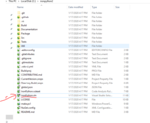Ravi Dhoble
Member
- Joined
- Dec 11, 2019
- Messages
- 13
- Programming Experience
- 1-3
Hello,
I want to create a code editor module of my own, like windows forms or WPF. A little background about this idea, If anybody has ever worked with National Instruments Teststand software, there you can create a sequence file (.seq) which is a kind of custom script file, which only opens in NI teststand. FYI, NI Teststand is mainly used in the factory automation-related work.. (not only for this purpose but for a variety of applications.). So when you create a sequence, you can drag and drop different functions (for eg. subsequence, if-else, for loop, message popup func. etc. ). There it is termed as "steps". For each step, you can add customize logics, set variables and invoke different compiler modules that will execute the step, generate the results.
Okay, so I want to design a similar "Script editor" engine/module in c# and I thought to use IronPython, which will allow me a create a script file (.py) automatically whenever I will drag n drop GUI elements like buttons, step types n all. Since user will design a script in runtime so, I need interpreter to check syntax and other things in the runtime and that's why I thought to use IronPython. I read many documents on the web related to this, but don't know exactly how to approach this? I am curious to know how binding works, how Windows forms works..like when a control is added, it automatically links its functionality to the designer or code file. So how this works?
I want to create a code editor module of my own, like windows forms or WPF. A little background about this idea, If anybody has ever worked with National Instruments Teststand software, there you can create a sequence file (.seq) which is a kind of custom script file, which only opens in NI teststand. FYI, NI Teststand is mainly used in the factory automation-related work.. (not only for this purpose but for a variety of applications.). So when you create a sequence, you can drag and drop different functions (for eg. subsequence, if-else, for loop, message popup func. etc. ). There it is termed as "steps". For each step, you can add customize logics, set variables and invoke different compiler modules that will execute the step, generate the results.
Okay, so I want to design a similar "Script editor" engine/module in c# and I thought to use IronPython, which will allow me a create a script file (.py) automatically whenever I will drag n drop GUI elements like buttons, step types n all. Since user will design a script in runtime so, I need interpreter to check syntax and other things in the runtime and that's why I thought to use IronPython. I read many documents on the web related to this, but don't know exactly how to approach this? I am curious to know how binding works, how Windows forms works..like when a control is added, it automatically links its functionality to the designer or code file. So how this works?


